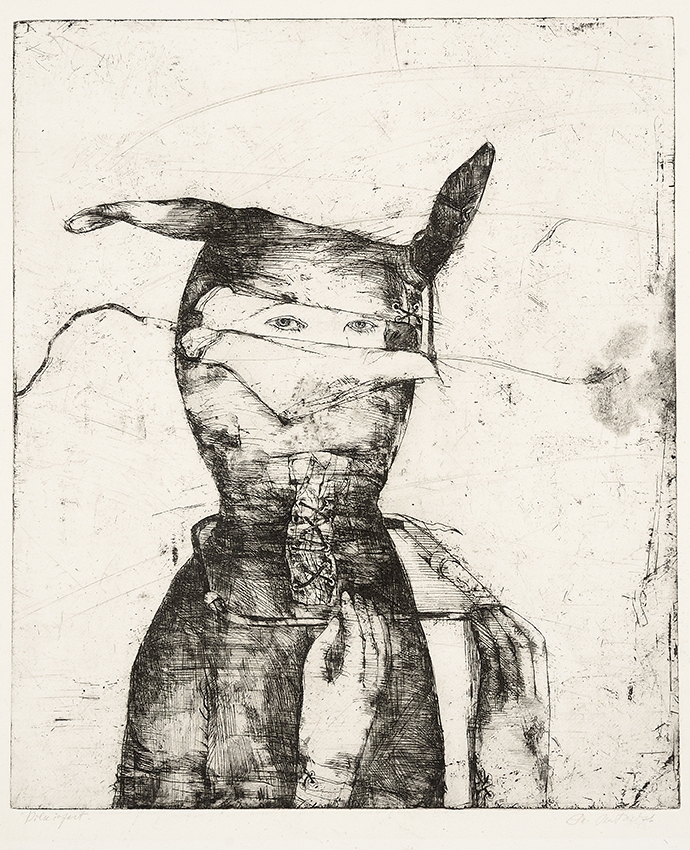The pictorial spaces, ranging from minimalist to erumpent and lush, reflect the artists’ diverse relationships with the then existing environments and ways of being. The keyword linking the different artistic positions of the artists under observation is hybridity. By synthesising artificial and natural elements and casually setting up dialogues between phenomena, materials, stories, bodies, myths and spaces, they create new compounds. Here, hybridity is interpreted as an open, non-hierarchical, empathic, non-binary and attentive relationship created between the elements of a picture, which also accentuates the complexities of various phenomena. In these works a boundary, or the graphic line denoting it, is often a negotiated, porous, conditional and open possibility. Creating rupturing conflicts within the pictorial space does not appear to have been the aim of these graphic artists. On the contrary, they rearranged reality and the world around them in ways that would prevent it from disintegrating or crumbling into conflicting particles, creating instead a new synergy stemming from the intertwining of different elements. Such an approach seems to offer our present crisis-ridden times an important incentive to move forward.
The display has conditionally been divided into different chapters that unfold as the viewer passes through the exhibition space: the relationship between humans and nature, different approaches to the body, roles assigned to people socially or taken on personally, interfaces with heritage and folklore, the impact of human activity on the environment and its repercussions, the poetry of mundane reality, the dark vibrations of existence, and the multifaceted experiences of womanhood, motherhood and ageing. An important notion is the circle of friends, reflected in the polyphonic conversation created between different artistic positions and approaches.
Perhaps the rich legacy of female graphic artists, in which we find such themes as attentiveness towards one’s surroundings, various facets of womanhood, appreciation and visualisation of care and intimacy, friendship and other social and human issues, will offer clues and fulcra necessary to survive the current times and to envisage alternatives.
The contemporary performance artists Jette Loona Hermanis, Kaja Kann and Keithy Kuuspu have been invited to relate performatively to the works displayed.
Team
Curators: Maria Arusoo, Eha Komissarov and Eda Tuulberg
Exhibition design: Edith Karlson and Maria Luiga
Graphic design: Brit Pavelson
Coordinator: Magdaleena Maasik
Senior art handler: Tõnis Medri
Exhibition team: Richard Adang, Darja Andrejeva, Kaarel Eelma, Kaja Kährik, Margit Pajupuu, Renita Raudsepp, Brigita Reinert, Tiiu Saadoja, Kaidi Saavan, Agathe Marie Sarap, Mati Schönberg, Laura Tahk, Elnara Taidre, Anne Untera, Uve Untera and Madli Valk
We thank
Estonian Centre for Contemporary Art, Narva Museum, Tartu Art Museum and private collections
Kaarel Eelma, Taru Elfving, Eero Epner, Katrin Kivimaa, Krista Kodres, Erik Liiv, Silvi Liiva, Naima Neidre, Heigo Pikkas, Kaisa Puustak, Nikolai Põldroos, Koit Randmäe, Elo-Hanna Seljamaa, Kadi Soosalu, Marje Taska, Aleksander Tsapov, Maria-Kristiina Ulas, Aili Vint and Marje Üksine




